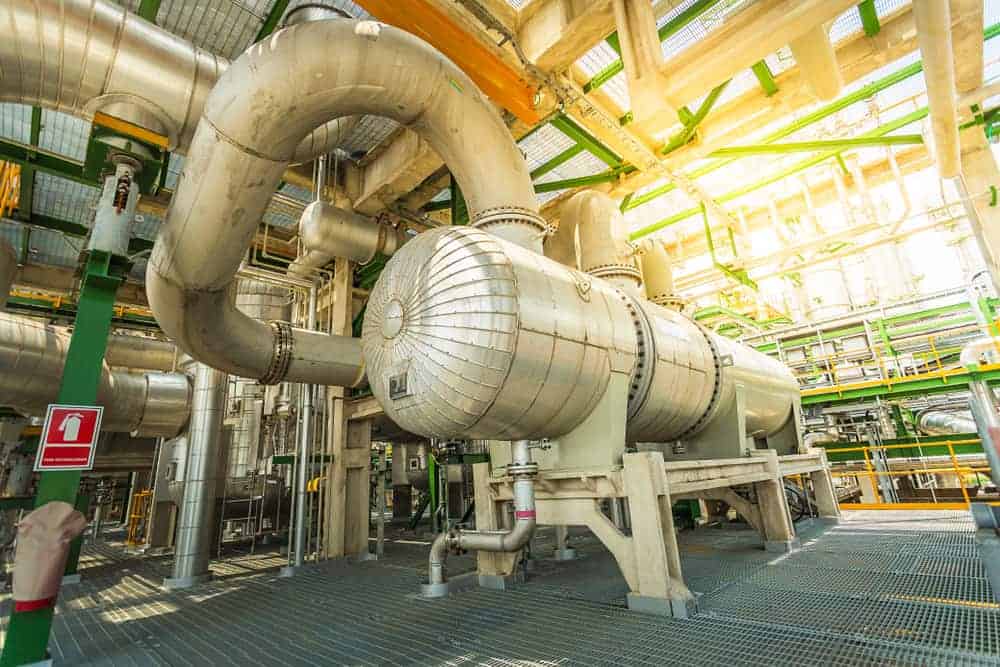
Manufacturers turn to pressure vessels when an application requires high-pressure storage or processing of liquids or gas. As a result, pressure vessels are used across a wide range of industries, including food and beverage, biopharmaceuticals, and oil and gas. While pressure vessels are essentially closed containers, their various applications make the material selection and fabrication process for pressure vessels unique. To guide manufacturers in the process, several applicable welding codes and standards are available.
The American Society of Mechanical Engineers (ASME) is one of the primary agencies that sets standards for the design, fabrication, installation, inspection, and certification of pressure vessels. In this article, we’ll examine the relevant welding codes and standards.
Examining Pressure Vessels by Industry
Pressure vessels are generally categorized as storage vessels, process vessels, or heat exchangers based on their functions, which vary across industries.
Food and Beverage Industry: Since these pressure vessels come in direct contact with food, provisions for a sanitary environment are paramount. The pressure vessel may include components like a coil for heating or cooling, agitators for mixing, and insulators for maintaining temperature.
Oil and Gas Industry: The oil and gas industry requires pressure vessels to operate at high temperatures and pressure to physically and chemically process the hydrocarbons. Decanters and distillation columns are among the pressure vessel components required for hydrocarbon processing.
Chemical Processing Industry: The pressure vessels in this industry are used to store chemical content where reactions can occur under different temperature and pressure conditions. The vessel should be non-corrosive and non-contaminant. Mixing tanks, bioreactors, and fermentation tanks may be some of the important components when engineering these pressure vessels.
Nuclear Industry: The reactor pressure vessel in the nuclear industry must be built to withstand high-temperature, high-pressure, and radiation. Components like coolant loops, core shrouds, and the core contained within the vessel facilitate the process.
As displayed above, the requirements for pressure vessels and their components differ across each industry and application based on necessary functionality. To ensure the right build, industries must follow the appropriate codes and guidelines.
ASME Standard for Pressure Vessel Fabrication
Storing fluids under high-temperature, pressure, and reactive conditions make pressure vessels susceptible to failure. Thus, the design and fabrication of these pressure vessels should be performed so that their mechanical strength remains uncompromised by such conditions. Critical aspects of the pressure vessel fabrication process, like welding, must meet the same high standards.
When performed incorrectly, welded joints can become the weakest link. Incorrect weld parameters, insufficient weld preparation, or inaccurate material selection can lead to various defects. To avoid weld defects and inconsistencies, organizations like ASME created the Boiler and Pressure Vessel Code (BPVC). Section VIII of BPVC addresses the rules for the design, construction, and inspection of pressure vessels that exceed 15 psig of internal or external pressure.
- Division 1—Mandatory requirements, non-mandatory guidance, and prohibitions related to the design and manufacturing of pressure vessels.
- Section A—General requirement regarding the material use and construction method
- Section B—Requirement related to fabrication techniques for pressure vessel manufacturing
- Section C—Requirement related to the class of material
- Division 2—Mandatory requirements related to material use, design, fabrication, installation, and inspection of pressure vessels
- Division 3—Mandatory requirements and prohibitions pertaining to pressure vessels exceeding an operating pressure of 10,000 psi
By adhering to these mandatory and non-mandatory ASME pressure vessel fabrication standards, manufacturers can ensure pressure vessel quality and safety.
Achieving ASME Pressure Vessel Fabrication Standards
The main goal of ASME BPVC standards is to ensure that the pressure vessels used in each industry are safe to operate in the extreme conditions the pressure vessels may encounter. Selecting the correct welding process can help ensure the mechanical strength of these vessels. Many manufacturers use orbital GTAW to achieve these goals. Not only does orbital GTAW exercise parameter control to support precision welding, but the process produces clean and pure welds that can be especially useful when pressure vessels are used for sanitary applications.
For critical pressure vessel fabrication, ASME standard compliance and an optimized welding process support both quality assurance and cost-efficiency.
Arc Machines, Inc. is a leader in automated welding technology that provides a range of orbital welding solutions to help your manufacturing process comply with the ASME pressure vessel fabrication standards. For inquiries regarding products, contact sales@arcmachines.com. Arc Machines looks forward to providing the equipment and services your project needs. Contact us to learn more.




